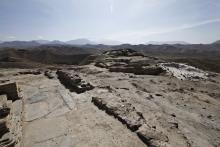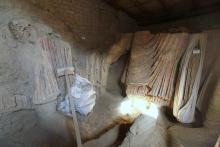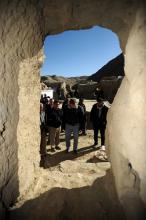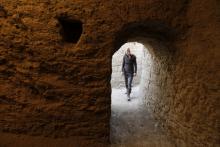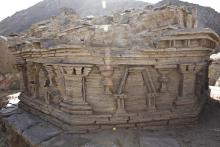Just south of the city of Kabul, in Afghanistan, a discovery was made of an ancient Buddhist temple complex that has the potential to change our historical understanding of the origins and purposes of the Silk Road. The site of Mes Aynak is a treasure trove of artifacts and information. So far excavations have yielded manuscripts, multiple carved Buddhas and several structures. Archaeologists believe that, if given time to fully excavate the site, they might find evidence of occupation dating back as far as the 3rd century BCE.
Unfortunately, the economic realities of the situation may spell the end of
this historical marvel. The site is inconveniently located on top of what is believed to be the 2nd largest untapped source of copper in the world. Currently, Afghanistan has a deal with China to begin mining the area, which means that the Mes Aynak site would be destroyed in the process. Normally one might think that the cultural value of such a find is worth more than a mining contract, but the country of Afghanistan is not in any position to deny the potentially tens of billions of dollars that China will bring to their country, not to mention the thousands of jobs that will be created. The Chinese mining project is the biggest foreign investment in Afghanistan’s history. With international assistance drying up, those in charge are being forced to make some tough decisions.So archeologists are scrambling to learn as much as they can from the site
before it goes away. Investors from all over have been pouring money into the project, with more than $50 million collected so far. Artifacts are being removed and placed in a newly constructed nearby museum for display and study. Already assumptions regarding the history of the Silk Road have been challenged and new questions raised. Thankfully, China has granted some extra time to explore Mes Aynak, though that time is quickly running out and the mining project must begin soon. It is a shame that such history and culture will be destroyed in the name of profit and unfortunate that the needs of the moment must drown out our curiosity for the past. With any luck, the most important pieces of Mes Aynak may survive via the museum so that future generations of Afghanis may know the history of their land.